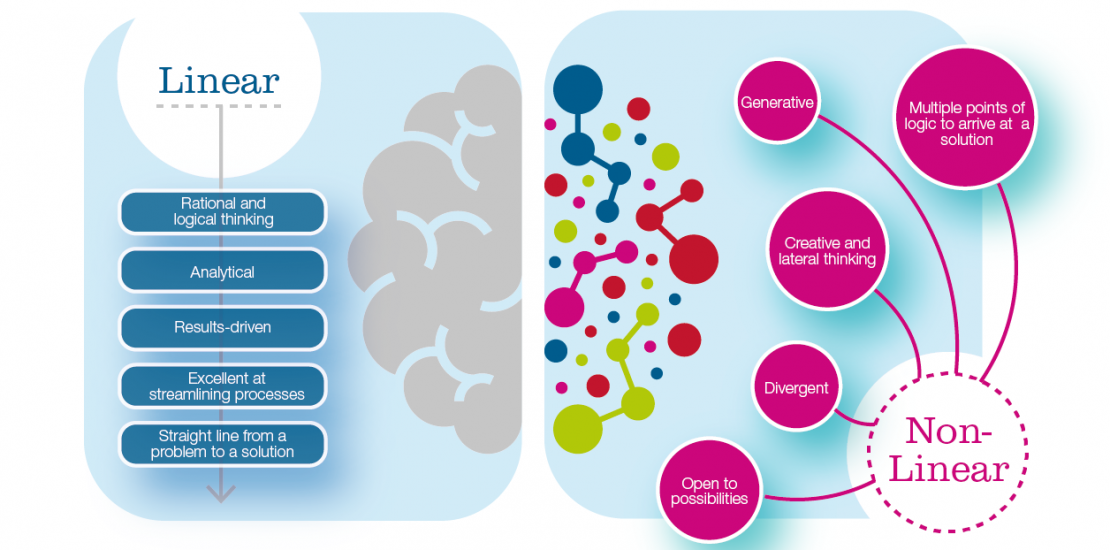- January 3, 2022

Over the past two years, we’ve seen change in all aspects of our lives. Some welcomed it with open arms and others were asked to adapt. So as change has become such a vital aspect of business management, how do we encourage both linear and non-linear thinkers to adopt new processes?
When it comes to problem solving, people generally adopt one of two mind-sets. Linear thinkers use a rational and logical thinking style to apply known information to new situations using consistency, rules, formulas and patterns. They are analytical, results-driven and excellent at streamlining processes.
Non-linear thinkers allow less restrictive thoughts to expand in multiple directions, which allows for multiple points of logic rather than just one answer. This creative mind-set typically encourages change but may need structure and direction when implementing new processes.
Both linear and non-linear thinkers are integral to business management, however challenges arise when managing these different approaches to change. How do we create sustainable change whilst managing these contrasting mind-sets?
- Establish the why
Change will inevitably involve an element of the unknown. For linear thinkers, this can pose a threat to existing practices leading to resistance. For non-linear thinkers, the unknown opens up opportunities for an unstructured approach to planning. Establishing exactly why change is needed generates support and creates a framework to plan and move forward.
- Communicate the change
Once the plan is in place, clear and regular communication helps to create a sense of structure and provides context to the change. Ownership is shared amongst linear and non-linear thinkers alike who work together to achieve project milestones.
- Stay flexible and think long-term
It’s all well and good implementing change in times of crisis, however it’s important to ensure that it’s sustainable. This requires managers to stay flexible and adapt to known issues whilst keeping the end goal in mind. This way, no matter the linear or non-linear mind-set, sustainable change can be established and maintained in the long term.
As we continue to navigate change, whether that be through business transformation programmes or macro-environmental factors outside of our control, it’s imperative for managers to familiarise themselves with the differing mind-sets in order to be effective, proactive leaders. Through a concerted effort to strengthen understanding, communication and flexibility, we can utilise both linear and non-linear thinking to create sustainable change.
